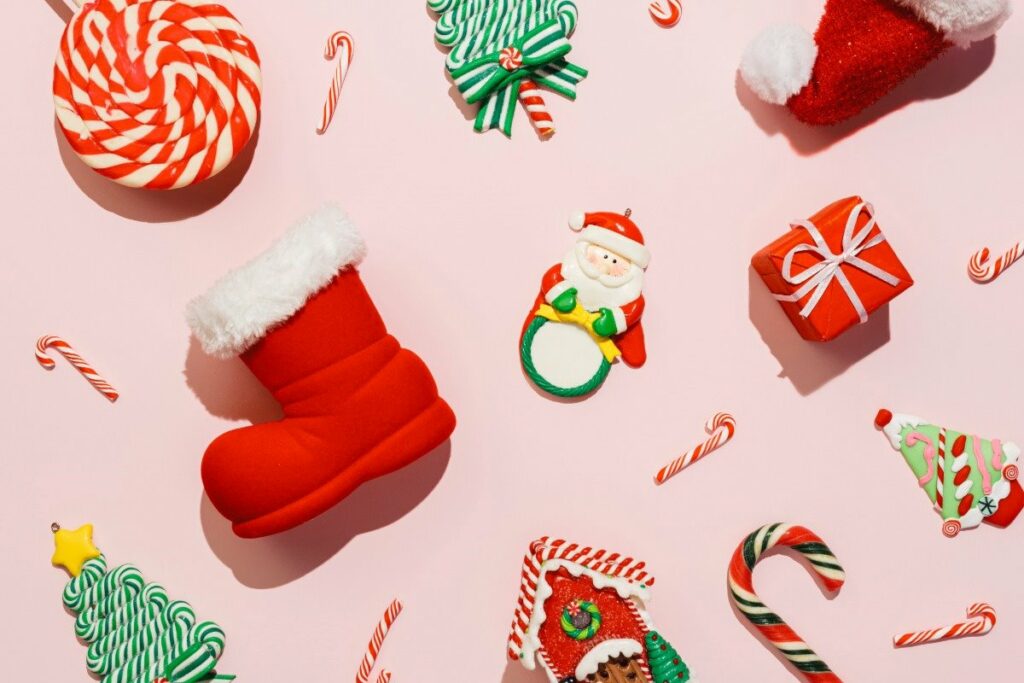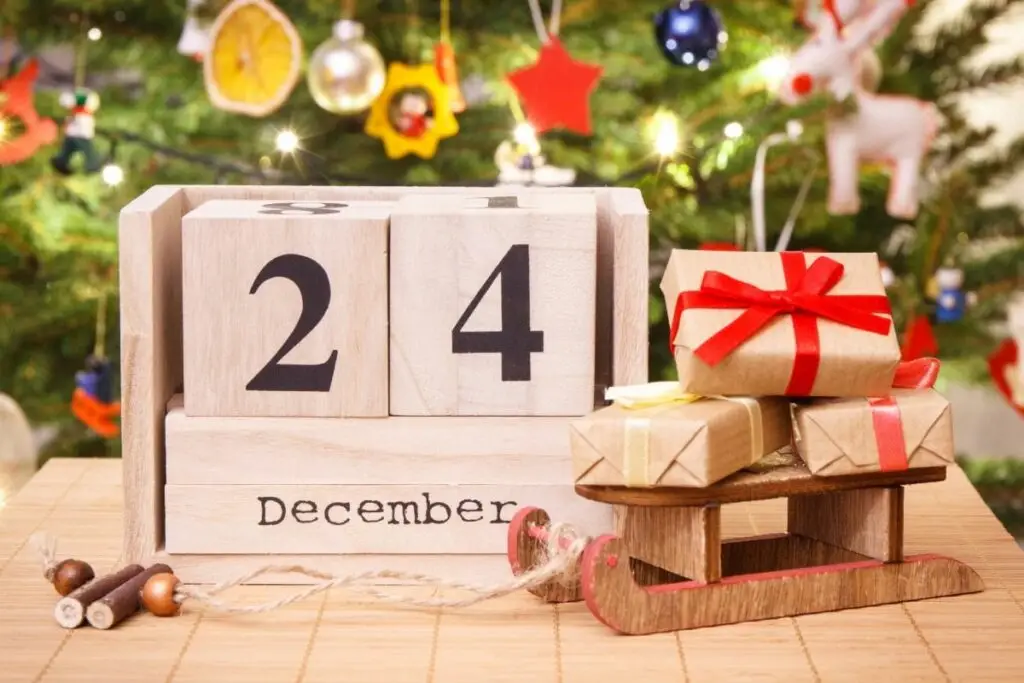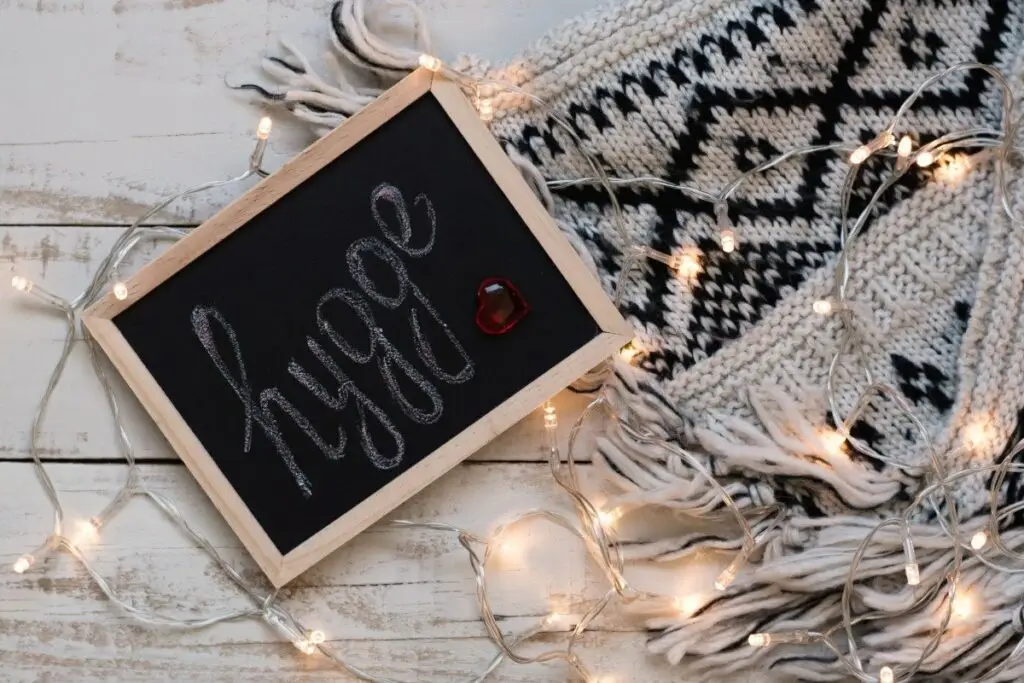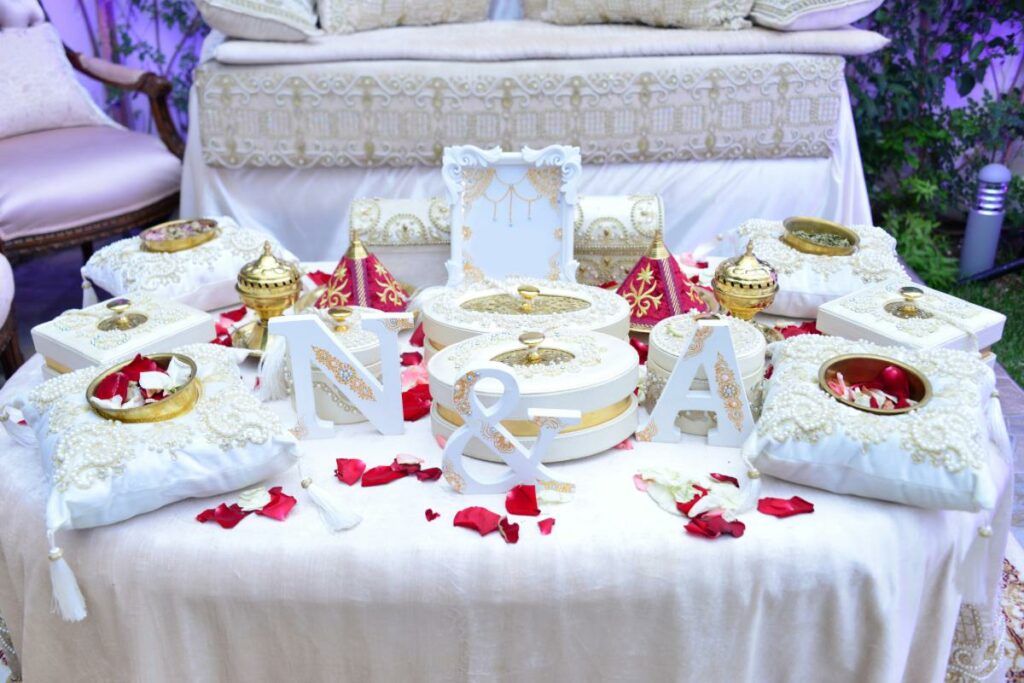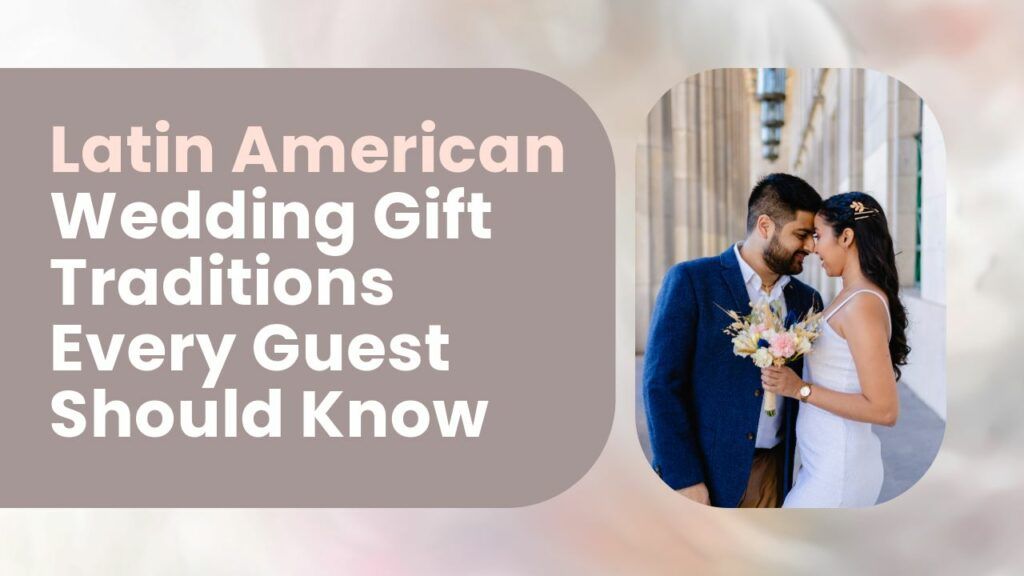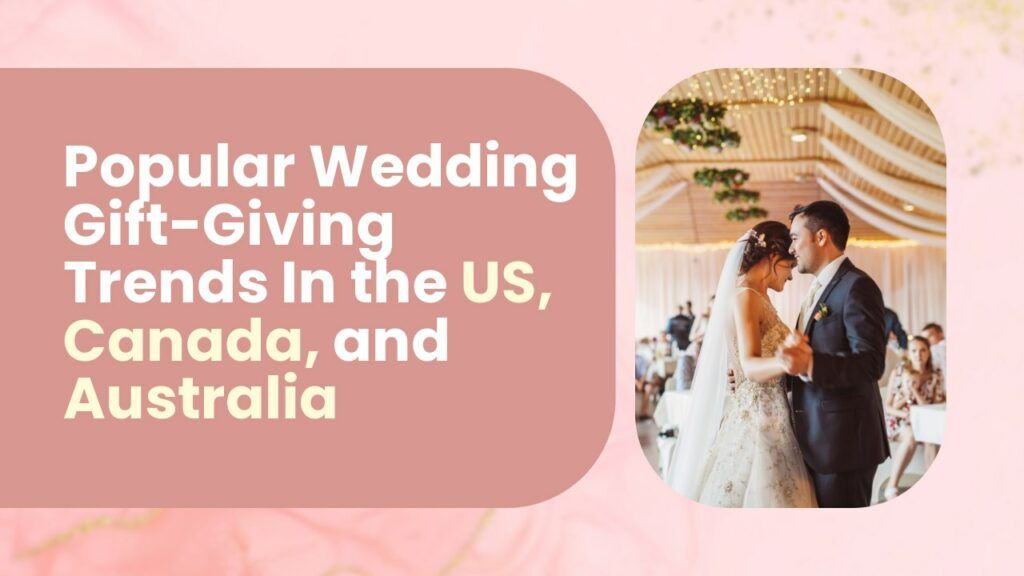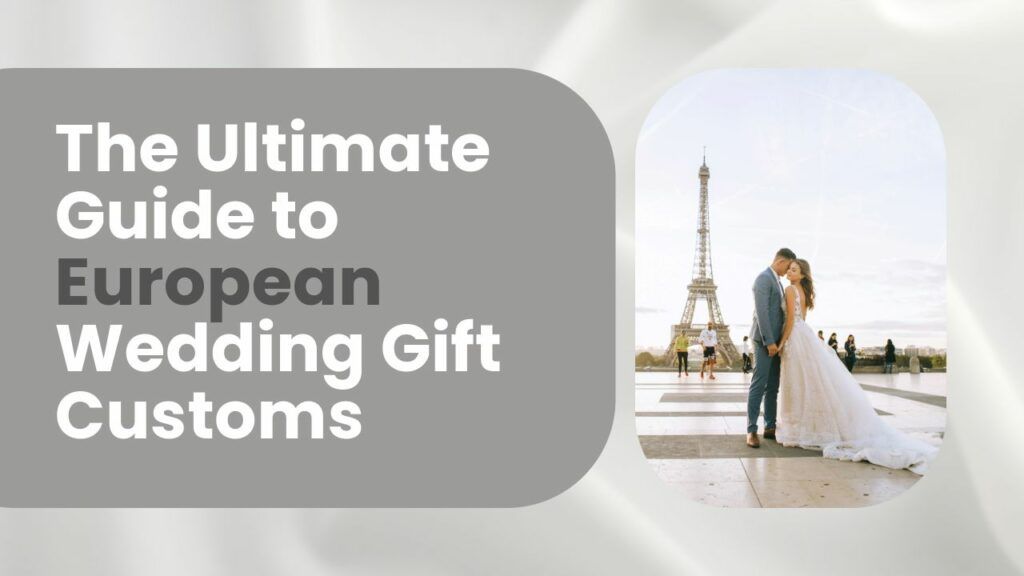Some of the links on this blog may be affiliate links. This means that if you make a purchase through these links, we may earn a small commission at no additional cost to you. We are a participant in the Amazon Services LLC Associates Program, an affiliate advertasing program designed to provide a means for us to earn advertising fees by linking to Amazon.com and affiliate websites.
Wedding traditions in Asia are an extraordinary mix of intriguing and original traditions shaped over the centuries. Each Asian country brings its own unique character that influences wedding gift-giving customs. Unlike Western weddings, which tend to focus on dancing and speeches, some Asian weddings can last days full of rituals such as tea ceremonies honoring ancestors or symbolic meals, each bringing good luck to the couple.
In this article, we will take a closer look at Asian wedding gift traditions. How much money to spend? What is the meaning behind certain gifts? What are the do’s and don’ts of Asian wedding gift customs? Whether you’re attending a Chinese, Indian, Japanese or Thai wedding, consider this article your go-to guide for navigating Asian wedding gift etiquette.
Table of Contents
Common Wedding Gift Traditions Across Asia
Wedding traditions in Asia are as diverse as its cultures. Despite these differences, several common gift-giving customs appear across many Asian regions. One very common practice is giving monetary wedding gifts. They are often presented in red or decorative envelopes, symbolizing prosperity and good fortune for the newlyweds.
It is also customary to give gold jewelry, fine tea, and household items, which are symbols of wealth, harmony, and a happy married life. In some cultures, specific gifts like jade in China or silk in India hold deep cultural significance, passed down through generations.
While traditions vary, there are a few key etiquette rules apply:
- Numbers hold meaning–Avoid any gifts that include the number four (which sounds like “death” in several Asian languages), and number eight is considered lucky.
- Reciprocity is key–In most Asian cultures giving back a gift of equal value that you received shows you are thoughtful and respectful.
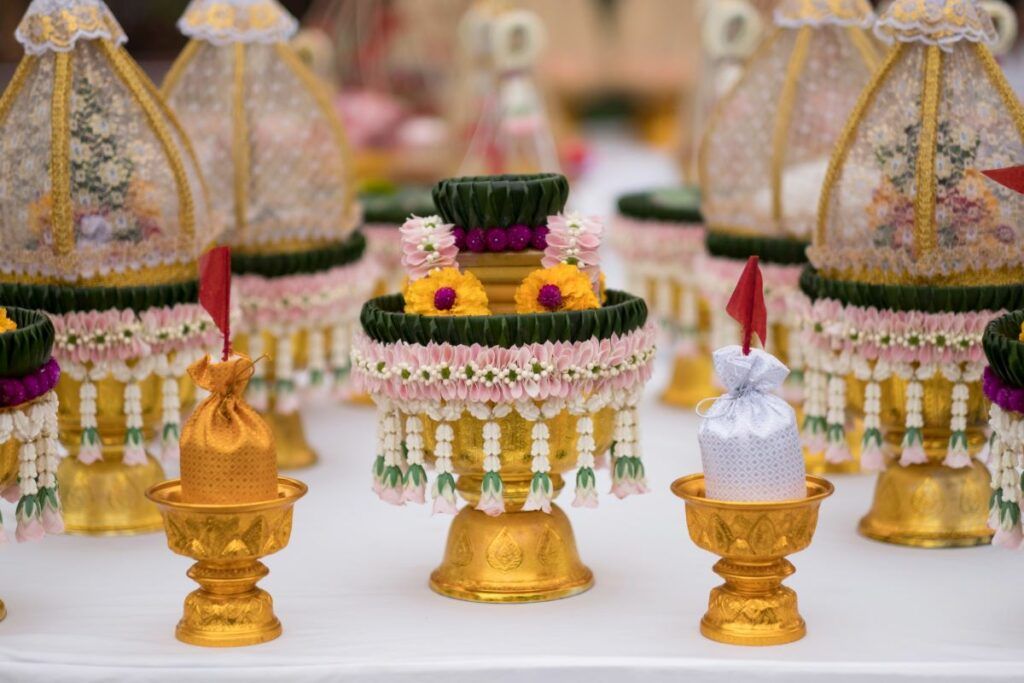
Symbolism in Asian Wedding Gifts
Wedding gifts are practical, but they may also carry a deep cultural meaning. Always try to select gifts that have a positive and lucky meaning in the specific Asian country where the wedding is held. The couple will appreciate your gift as a sign of good wishes for their future..
- Jewelry (especially gold)–Represents wealth, prosperity, and lasting love. In Chinese and Indian weddings, brides often receive gold as a symbol of financial security.
- Items in pairs (teacups, chopsticks, etc.)–Symbolizes harmony and unity. Giving two of something (like matching teacups) reflects the idea of a couple’s lifelong partnership.
- Handcrafted or luxury textiles (silk, embroidery)–Signifies blessings for a refined and elegant life, as well as good fortune.
- Sharp objects (knives, scissors)–Avoid giving sharp objects as they symbolize “cutting ties” in many Asian traditions making them inappropriate wedding gifts.
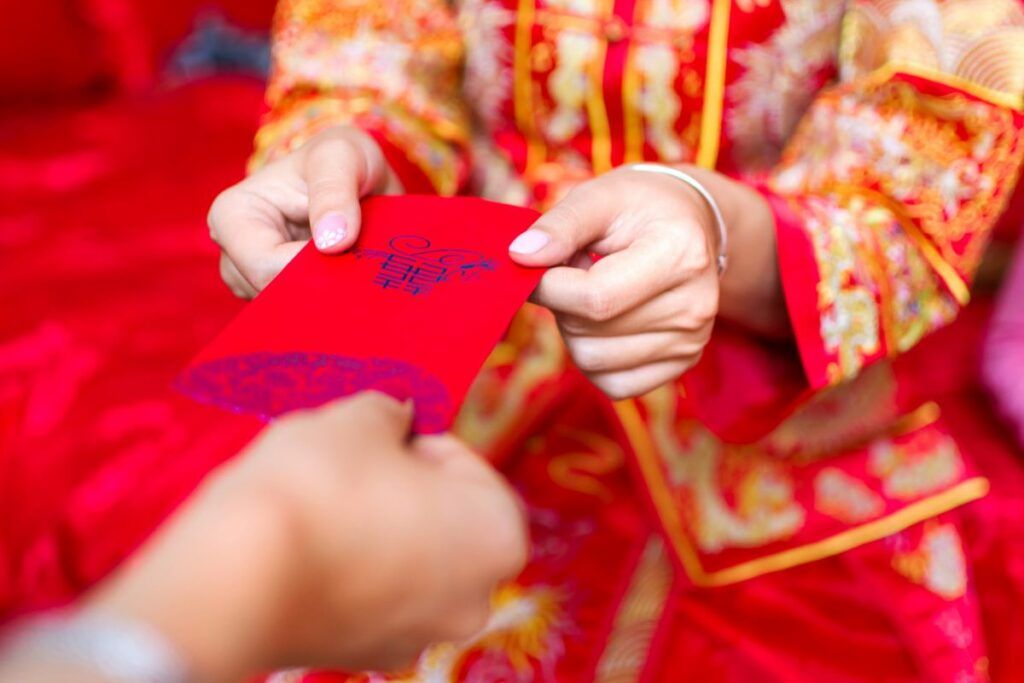
Modern Asian Wedding Gifts Trends
While traditional gifts like monetary contributions and symbolic items remain significant, modern Asian wedding gift trends are evolving, particularly among younger couples and in urban centers.
- Personalized keepsakes–There’s a growing appreciation for wedding gifts that have a personal touch: engraved jewelry with meaningful dates or initials, custom-embroidered robes reflecting the couple’s style or beautifully framed photos.
- Experiential gifts–Many young couples now value shared experiences as wedding gifts: honeymoon packages to exotic destinations, relaxing spa vouchers, or gourmet culinary experiences.
- Smart home gadgets–In cities like Tokyo, Singapore and Hong Kong, couples appreciate smart home gadgets. Consider gifting robotic vacuums, smart lighting systems or high-end sound systems.

How Much Should I Spend on an Asian Wedding Gift?
This is one of the most common questions wedding guest ask themselves. The amount you should spend varies depending on cultural expectations, your relationship with the couple and the formality of the wedding.
Guests usually give what they can afford, while family and close friends tend to give larger amounts than acquaintances or coworkers. In countries like China, Japan, and Korea, cash gifts (known as hongbao, goshugi, or pae-baek respectively) are common with the amount depending on factors such as the prestige of the location and local customs.
As a very general guideline, close family members may give between $100 and $500USD, while friends and distant relatives often give between $50 and $150USD. However, these amounts are highly variable and depend on the country’s economy, the prestige of the wedding and the local customs. It is always best to consult with someone who is familiar with the culture.

Chinese guests typically give cash in red envelopes (hongbao).

Japanese cash gifts (goshugi) are given in shugi-bukuro envelopes. The amount should always be an odd number, as even numbers are associated with separations. Bills should be crisp and new.

Indian monetary gifts often end in “1” (e.g., $101, $251) to symbolize good luck.

Money gifts depend heavily on the guest’s relationship with the couple.

The amount depends on the relationship with the couple and the prestige of the wedding.

Monetary wedding gifts should be places in red envelopes (li xi).

The amount of a monetary gift should end with “0”, as these numbers are considered lucky.
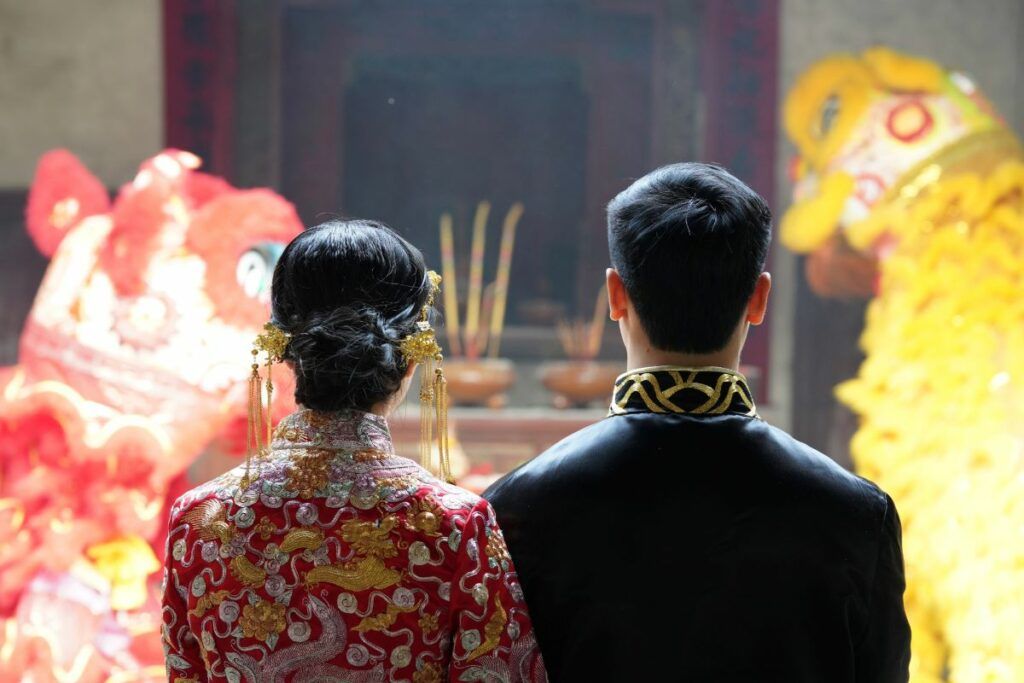
Chinese Wedding Gift-giving Traditions
The act of gift-giving in China follows strict etiquette and they have several unique wedding traditions. Many of them are significantly different from Western customs. One of the most striking differences is the color scheme. Instead of the traditional white, in China the bride, decorations, and accessories are typically in shades of red, symbolizing love, prosperity and happiness. Color plays a crucial role in Chinese beliefs and red is considered the best way to express passion and joy.
This color scheme also influences the gift packaging and wrapping. Guests traditionally give money in red envelopes known as hongbao (红包) or li shi (利是), which symbolize fortune and happiness.
When guests present a gift, it should be handed over with both hands as a sign of respect. The packaging should also be wrapped in gold or red paper. Remember to avoid wrapping wedding gifts in black, white, blue, or yellow, as they symbolize mourning.

Japanese Wedding Gift-giving Traditions
Wedding gifts are presented during the reception and are tied with a special decorative cord known as mizuhiki. The colors of the gift wrapping are also highly symbolic, typically featuring combinations like red and white, gold and red, purple and white or silver and gold.
While Japan shares many similarities with China in terms of gift-giving, there are a few important differences to keep in mind. In China, red is a lucky color, but in Japan, solid red wrapping is considered inappropriate. Additionally, you should always give gifts in private, not in front of a group.
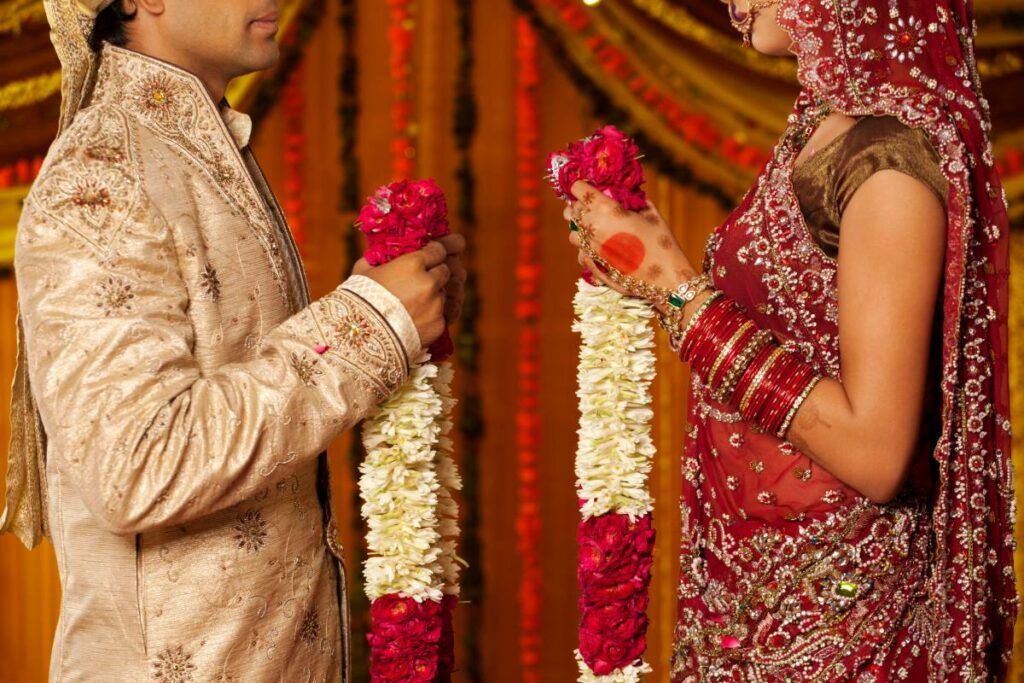
Indian Wedding Gift-giving Traditions
Gift-giving at Indian weddings is often lavish with gold jewelry being a preferred choice. Gold symbolizes wealth, protection and blessings making it a traditional and highly valued gift. Money is also a common wedding gift and it is usually presented in decorative envelopes. Unlike in China where even numbers are considered lucky, monetary wedding gifts in India often end in ‘1’ (e.g., 101, 501), symbolizing growth and new beginnings.
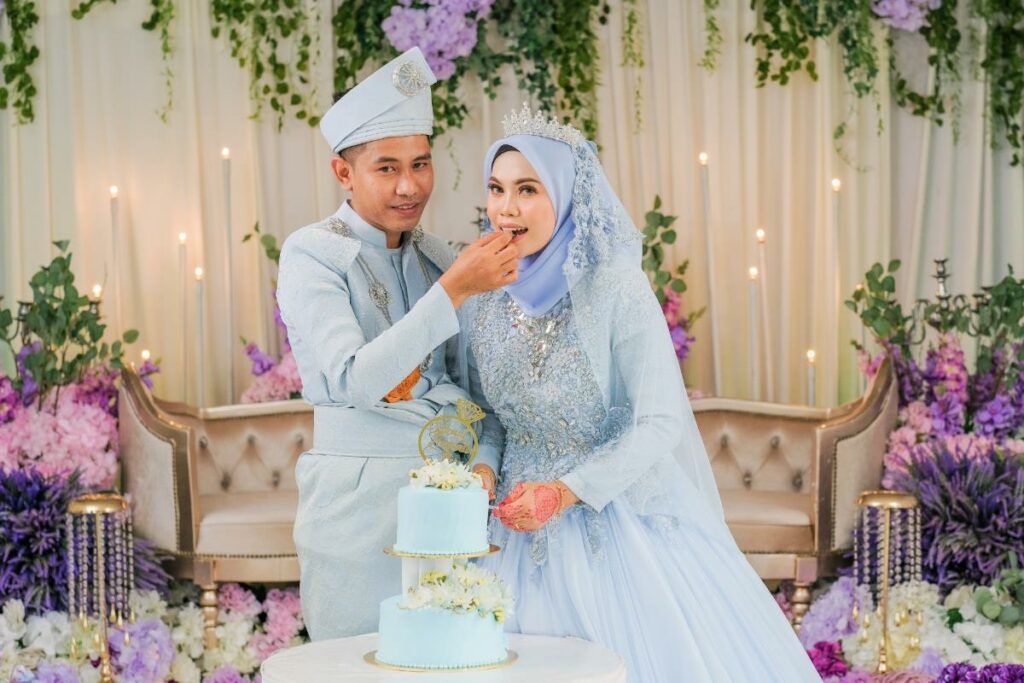
Malaysian Wedding gift-giving traditions
Malaysian wedding gift traditions vary depending on ethnicity and region. However, a common tradition is the duit hantaran, a financial gift from the groom to the bride’s family. The dowry amount is negotiated between the families and symbolizes the groom’s responsibility to his future wife.
At Malay weddings, guests typically give duit raya, cash in decorative envelopes, which are similar to Chinese red packets. The amount of this gift depends on the guest’s relationship with the couple. Other Malaysian symbolic wedding gifts include sweets, household items and gold jewelry.
At Chinese-Malaysian weddings, the preferred gift is ang bao which is money in a red envelope. The amount of this gift will reflect the guest’s blessing on the couple. Indo-Malaysian weddings follow similar customs with cash gifts as well as gold jewelry for the bride being the most appreciated..

Philippines Wedding gift-giving traditions
In the Philippines, wedding gifts come in many forms, but cash gifts are the most common and practical. Guests usually give cash gifts in elegant envelopes making sure the amount ends in a “0” since these numbers are considered lucky.
An important Filipino wedding tradition is the arrhae, or wedding coins. The groom gives the bride 13 gold or silver coins. The gesture symbolizes his commitment to the household. This practice has Spanish roots and it is continued today in many modern Filipino weddings.
In addition to a monetary gift, you can also give gifts such as household appliances, home decorations and personal items to the couple. Close relatives often give gold jewelry or symbolic gifts with sentimental value.
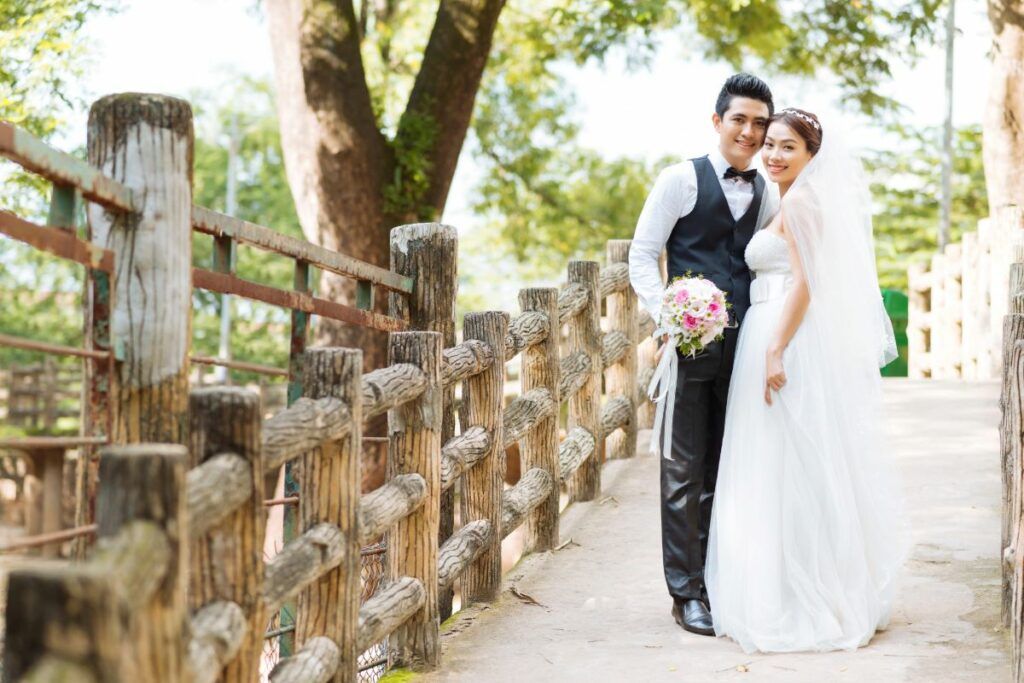
South Korean Wedding Gift-giving Traditions
A unique aspect of Korean wedding traditions is the pae-baek ceremony, an intimate post-wedding event where the bride and groom pay homage to their elders. During this ceremony, the groom’s family often presents gifts such as jewelry, silk or symbolic foods such as dactyls (red dates) and chestnuts which symbolize fertility and prosperity.
In the past, the groom would often present the bride’s family with Honsu, a wedding gift consisting of valuable items such as silk clothes, household items, and even livestock. However, in modern Korea, monetary gifts are the preferred choice because they are practical and support the couple’s new journey together.

Singaporean Wedding Gift-giving Traditions
Wedding gift customs in Singapore vary due to its multicultural society. The most common practice especially at Chinese weddings is the gift of ang bao, red envelopes containing money.
At Malay weddings, guests often give money or practical household gifts such as kitchenware, bedding or other household items. Close relatives may also contribute to the Hantaran, a dowry given by the groom’s family to the bride’s family which includes items such as perfumes, cosmetics, jewelry, or traditional attire.
Meanwhile, Indian weddings in Singapore also place an emphasis on cash gifts usually placed in ornate envelopes. It is traditional to give gold jewelry, especially to the bride, as it symbolizes wealth and stability in the marriage.
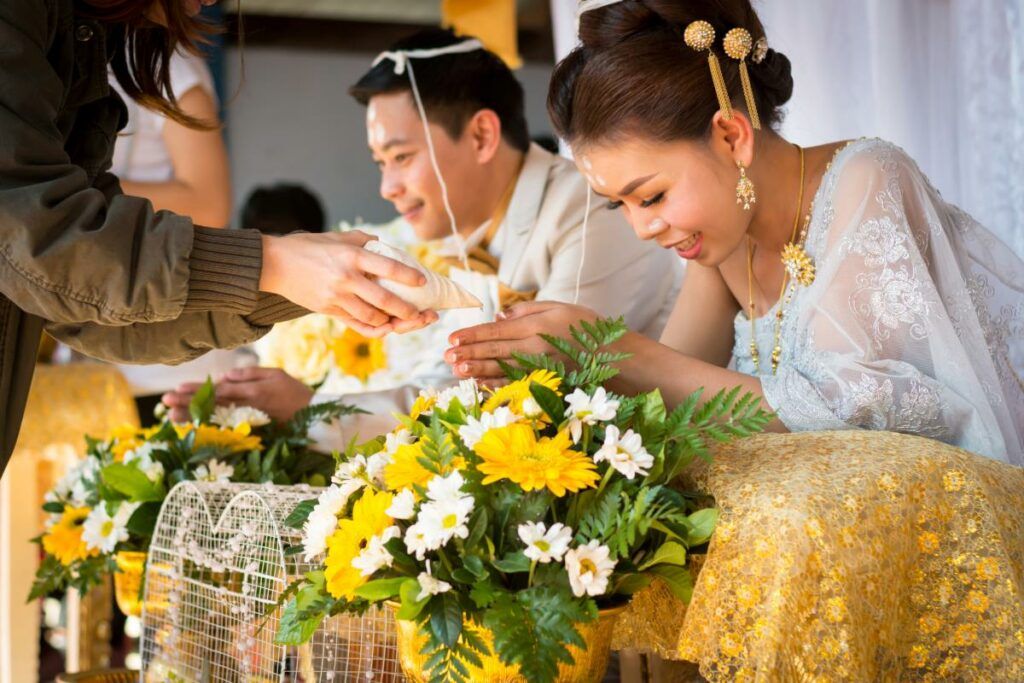
Thai Wedding Gift-giving Traditions
One of the most important aspects of a Thai wedding is the sin sod, a dowry given by the groom to the bride’s family as a symbol of gratitude and financial security. The dowry often consists of gold, money or other valuables and it symbolizes the groom’s ability to provide for his future wife.
During the wedding ceremony, guests traditionally present gifts of money in decorative envelopes. Other types of gifts are less common, as a monetary contribution is viewed as the best way to help begin the couple’s new life together. However, close family members may present the bride with gold jewelry as a symbol of prosperity and happiness in the marriage.

Vietnamese Wedding Gift-giving Traditions
A traditional Vietnamese wedding lasts two to three days and can take place at unusual times, even on weekdays. As in other Asian cultures, red plays an important role in Vietnamese wedding customs symbolizing happiness and prosperity.
The most common wedding gift is money, given in a red envelope known as “lucky money.” The amount depends on the financial situation of the giver and their relationship with the couple. Both cash gifts and wrapped gifts are usually given in red wrapping to bring good luck to the newlyweds.


